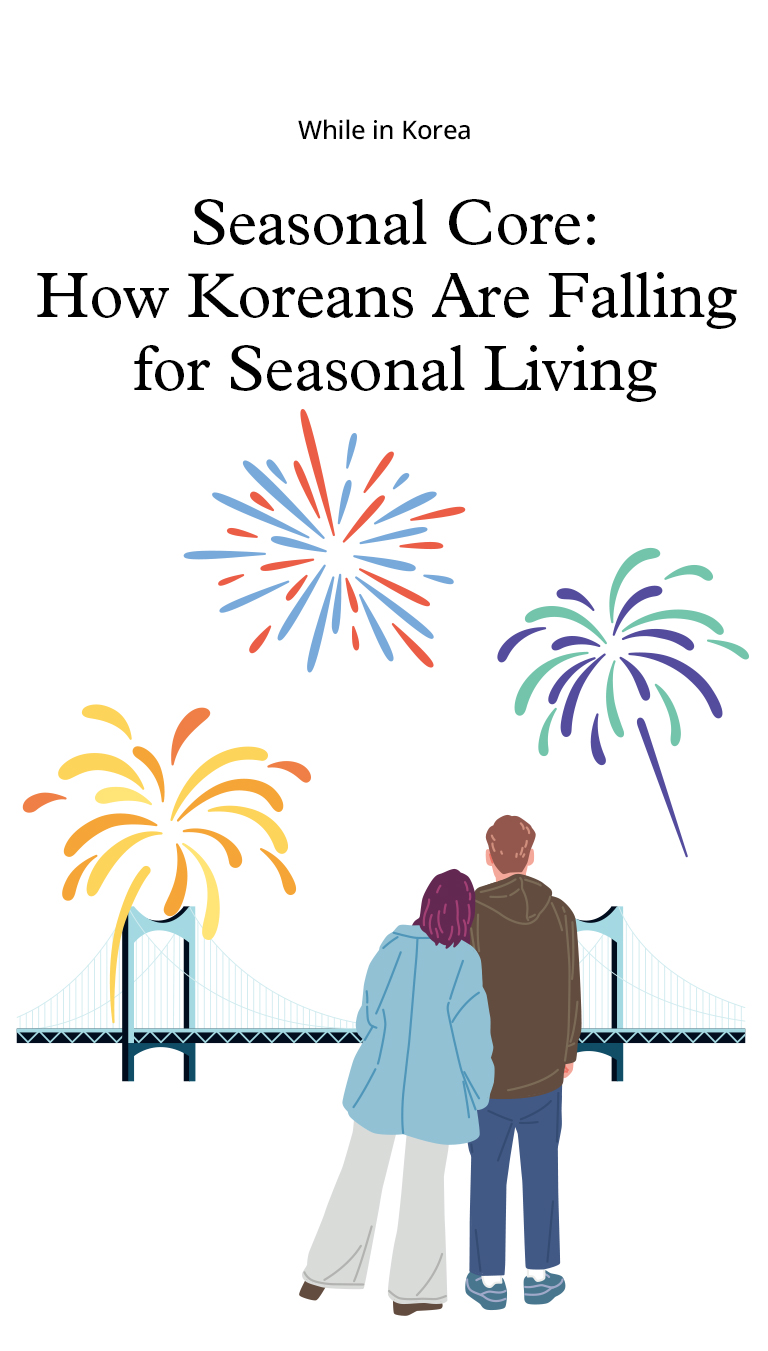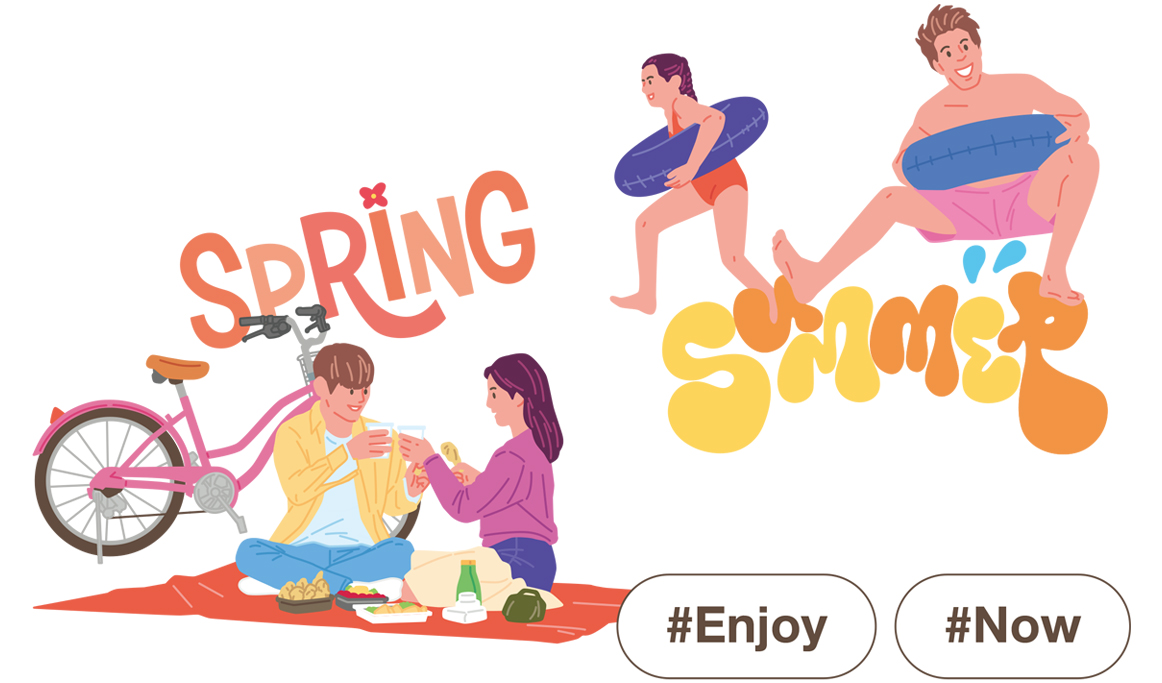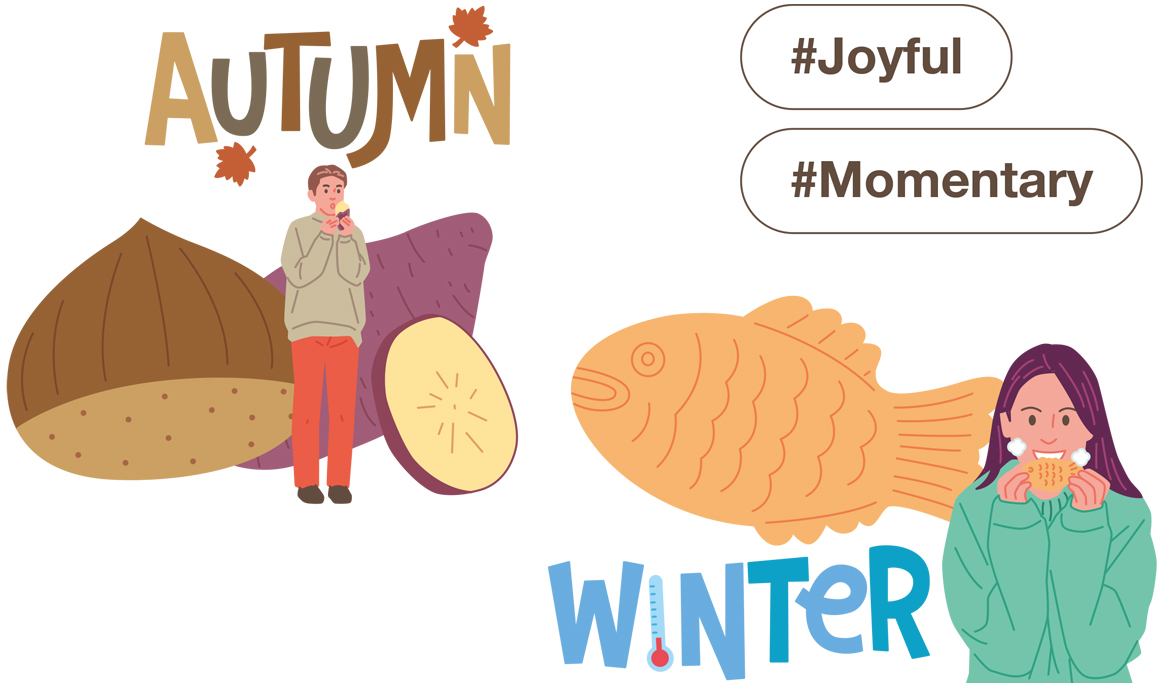
Seasons seem to fly by faster than ever these days. Yet in this rapidly shifting world, Koreans are zeroing in on experiences that can only be had during certain times of the year. Enter “seasonal core”—a trend that turns everyday seasonal moments into shareable content—and it’s reshaping Korean culture right now.
Writer. Minjo Kang
Illustrator. RYUGOON
Korea has its share of “-core” trends—norm-core, balletcore, gorpcore—but there’s one that’s distinctly Korean: seasonal core. The name blends “seasonal” (what’s currently in season) with “core” (the heart or essence of something), describing a lifestyle built around capturing each season’s unique energy and rhythm. It’s about savoring the freshest ingredients available at that moment or doing activities tied to specific times of the year.
Koreans today go well beyond the old standbys of “watermelon in summer” and “bungeoppang (fish-shaped bread) in winter.” They’re actively seeking out seasonal experiences: ordering fresh seasonal fruit for delivery, carving out time to visit places where a particular season shines. Spring means picnics along the Hangang River, summer means swimming pools, autumn means forest walks, and winter means ski slopes.
The surge of young people flocking to regional festivals is part of this movement, too. These festivals showcase local specialties and traditions that have been passed down for generations. While accessibility once kept some people away, now they’re making the trip to fully embrace the season—splashing in mud by the ocean in summer, catching gizzard shad by hand at autumn festivals when the fish is at its peak or sampling local preparations of the catch.
When social media lit up with #seasonal posts, broadcasters and brands jumped on board. A “seasonal food calendar” went viral after appearing on national TV, cosmetics brands released packages inspired by seasonal ingredients and collaborations featuring four-season bookmarks and other seasonal goods have been hits. There are even “seasonal core personality tests”—like those personality quizzes—where you find out which season matches you best.
As seasonal living took hold, Koreans started revisiting seasonal content. Summer means rewatching drama series with its summer setting; winter calls for films set in the snow. New spin-off terms like “strawberry core” and “spring core” keep popping up as people develop an ever more nuanced appreciation for seasonal living.

“Enjoy it now—it might not be here next year.” That’s what seasonal core enthusiasts say. But why is this trend happening now? Seasonality has always been a part of Korean life. What changed?
Experts point to three factors: disappearing seasons, post-pandemic nostalgia and anxiety about the future. Climate change has made once-common ingredients scarce. As seasons themselves start to fade, people feel nostalgic for something they fear losing, channeling that feeling into seasonal core.
There’s also a wellness connection. Seasonal eating aligns perfectly with trends like slow aging and blood sugar management. Fresh seasonal ingredients embody “healthy pleasure”—they’re part of taking care of yourself.
Then there’s the economic angle. In a time of inflation and stress, people want affordable moments of joy. A walk through a park bursting with seasonal color, a plate of fresh fruit—that’s enough. It’s luxury on a budget, but it feels luxurious.
For image-conscious Koreans who love expressing their identity, seasonal core is a natural fit. Seasonal items are colorful and story-rich, perfect for social media. They’re made for the kind of content creation Koreans excel at. The scarcity factor—the “only available now” aspect—adds to the appeal.
Seasonal core is fundamentally a culture of living in the present. It honors the four seasons, elevates agricultural products, and encourages mindful consumption. Because it naturally extends to visiting regions with seasonal traditions and exploring local characteristics, it can evolve like localism has—making it a trend that reveals Korea’s hidden appeal.
If you get the chance, try experiencing Korea’s seasonal culture for yourself. It might give you a richer understanding of what makes this place tick.
